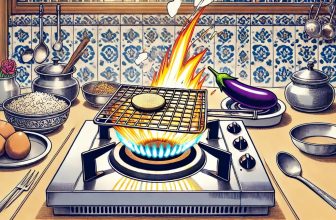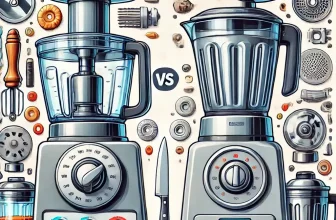Microwave cooking has become a staple in modern kitchens due to its speed, convenience, and ease of use. However, despite its widespread use, there are still many misconceptions and myths surrounding microwave cooking, especially when it comes to nutrition, health, and safety. In this post, we will explore and debunk some of the most common myths about microwave ovens, including concerns about nutrient loss, radiation hazards, and the overall safety of using these appliances.
Debunking 6 Microwave Myths: Common Misconceptions About Microwave Cooking
1. Myth: Microwaves Cause Nutrient Loss in Food
Fact: Microwave cooking does not cause more nutrient loss than other cooking methods.
One of the most common myths about microwaving food is that it causes significant nutrient loss, particularly in terms of vitamins and minerals. People often assume that the intense heat from microwaves destroys the nutrients in food, but this is not entirely true. In fact, any cooking method that involves heat can cause some level of nutrient degradation, and microwaving is no worse than conventional cooking methods like boiling or frying.
Here’s the science: Microwaving food works by using electromagnetic waves to generate heat, which heats the food from the inside out. This method uses significantly less water compared to methods like boiling, which can cause nutrients to leach out into the cooking water. Studies have shown that microwaving food with minimal water can help retain more nutrients than boiling or steaming.
For example, research from the National Center for Biotechnology Information (NCBI) highlights that microwave cooking of vegetables can preserve vitamins better compared to other cooking techniques. In one study, microwaving spinach preserved more folate (a vital nutrient) than boiling did.
While some vitamin loss is inevitable with any form of cooking, microwaving is actually one of the gentlest cooking methods for retaining nutrients, especially when food is cooked for a short amount of time.
Reference: NCBI Study on Microwave Cooking and Nutrient Retention
2. Myth: Microwaving Food Makes It Radioactive
Fact: Microwaves do not make food radioactive.
Many people are under the misconception that microwaving food makes it radioactive or somehow dangerous due to the “radiation” emitted by the microwave. This fear stems from the term “radiation,” which is often misunderstood. It’s important to clarify that the type of radiation used in microwaves is not the same as the harmful radiation associated with nuclear materials or X-rays.
Microwave ovens use a form of non-ionizing radiation, which means it does not carry enough energy to remove electrons from atoms or molecules, a key characteristic that makes ionizing radiation (like that from X-rays or gamma rays) harmful. Instead, microwaves work by emitting electromagnetic waves that cause water molecules in food to vibrate, generating heat and cooking the food.
Once the microwave is turned off, the microwave radiation stops immediately, and there is no residual radiation left in the food. In essence, the microwave is perfectly safe and does not cause food to become radioactive in any way.
3. Myth: Microwave Cooking Is Uneven and Dangerous
Fact: Modern microwaves cook food evenly when used correctly.
Another common myth is that microwave ovens cook food unevenly, leading to hot spots and cold areas in food that may cause burns or foodborne illness. While older microwave models had more uneven cooking, modern microwaves are equipped with better technology to ensure more even heating.
However, it’s still possible to have uneven cooking if you don’t use the microwave correctly. Here are some tips to ensure even cooking:
- Stir food halfway through cooking to redistribute heat and avoid hot spots.
- Cover food with a microwave-safe lid or plastic wrap to trap steam and ensure even heat distribution.
- Use microwave-safe containers that are specifically designed to distribute heat evenly.
Additionally, the cooking time and the wattage of the microwave will impact how evenly the food cooks. Higher-wattage microwaves (over 1000 watts) generally cook food more evenly and faster.
4. Myth: Microwave Ovens Release Harmful Radiation
Fact: Microwave ovens are safe when used according to the manufacturer’s instructions.
Concerns about microwave ovens releasing harmful radiation are common, but modern microwave ovens are designed with multiple safety features to prevent any harmful radiation from escaping. Microwaves are regulated by safety standards set by agencies like the U.S. Food and Drug Administration (FDA) and the European Union, ensuring that they are safe for household use.
Microwave ovens are built with metal enclosures that prevent microwaves from escaping and leaking radiation. As long as the microwave door is intact and the appliance is properly maintained, it is completely safe to use. Even if the door is cracked or the microwave is malfunctioning, the microwave will not emit harmful radiation because the design of the microwave prevents leakage beyond the sealed door.
For extra safety, always make sure to never use a microwave that is damaged or has a faulty door seal, and avoid standing too close to the microwave while it is in use. However, there’s no need to worry about radiation exposure from a properly functioning microwave.
Reference: FDA Microwave Oven Radiation Safety
5. Myth: Microwaving Plastic Containers Is Dangerous
Fact: Using the right type of plastic is safe for microwave cooking.
Another prevalent concern is the safety of microwaving plastic containers. The fear is that certain plastics might leach harmful chemicals into food when exposed to heat, especially when microwaved. While it’s true that not all plastics are microwave-safe, many are designed specifically to be used in the microwave without releasing harmful chemicals.
To ensure safety when using plastic containers in the microwave:
- Look for containers labeled “microwave-safe”, as these are designed to withstand heat and avoid harmful chemical leaching.
- Avoid using plastic containers that are not microwave-safe, such as single-use plastic takeout containers, which can warp or release chemicals like BPA (Bisphenol A) when exposed to heat.
- Use glass or ceramic containers when possible, especially for high-heat cooking, as these materials don’t leach chemicals into food.
6. Myth: Microwave Cooking Changes the Taste and Texture of Food
Fact: Microwave cooking does not change the flavor or texture of food any more than conventional cooking.
Some people believe that microwaving food changes its taste or texture, making it less appetizing compared to traditional cooking methods. While it’s true that the microwave can affect food in different ways (for example, foods that are meant to be crispy may become soggy), the actual taste of food remains largely unchanged if it is cooked properly.
In fact, because microwaves cook food more quickly, they can help preserve flavors and moisture better than other methods, such as boiling, which can cause water-soluble nutrients and flavors to leach out into the cooking water.
To preserve texture and taste, consider these tips:
- Use microwave-safe covers to lock in moisture while heating.
- Stir or rotate food regularly to prevent uneven cooking, which can alter texture.
- Avoid overheating food, as excessive heat can affect texture and taste, especially in foods like meat or bread.
In Summary: Microwaves Are Safe and Efficient Cooking Tools
While there are many myths surrounding microwave cooking, the reality is that microwaves are safe, efficient, and effective cooking tools when used properly. Whether it’s for reheating leftovers, cooking vegetables, or preparing a quick meal, microwaves can save time and energy without compromising nutritional value or taste.
To ensure you’re using your microwave safely:
- Use microwave-safe containers.
- Follow manufacturer instructions.
- Take the necessary precautions with hot foods.
By debunking these myths, it becomes clear that microwaving is not only convenient but also a perfectly safe and effective way to prepare meals in modern kitchens. With the proper knowledge, you can confidently incorporate microwave cooking into your everyday life, making the most out of this versatile appliance.
Sources:
- FDA’s Microwave Oven Safety Guidelines – FDA.gov
- Study on Microwave Cooking and Nutrient Retention – NCBI.gov
- The Truth About BPA in Plastics – National Institute of Environmental Health Sciences





